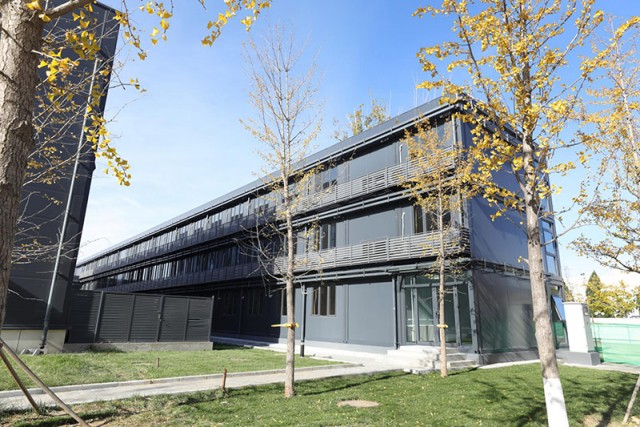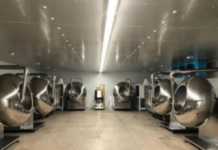(Isstories Editorial):- Shenzhen, Guangdong Oct 27, 2025 (Issuewire.com) – The global construction industry is at a critical juncture. Faced with a chronic shortage of skilled labor, soaring material costs, and an urgent mandate for sustainable development, the traditional stick-built model, characterized by cost overruns and unpredictable timelines, is becoming obsolete. The necessary revolution is not incremental; it is a fundamental shift from site-based project delivery–riddled with risk–to factory-based product certainty.
This transition is being spearheaded by the industrialization of construction through Modular Integrated Construction (MiC) and Design for Manufacture and Assembly (DfMA). At the forefront of this industrial transformation is Homagic, leveraging massive industrial capacity to deliver permanent, high-rise, high-quality structures with unprecedented speed and a groundbreaking 90% off-site completion rate.
Part I: The Industrial Revolution of Construction–Industry Prospects and Trends (Approx. 580 Words)
More on Isstories:
- Obama Presidential Library Honors Anthony “Amp” Elmore and Orange Mound in NARA’s Historic Record
- Jane Federoff Recognized by BestAgents.us as a 2026 Top Agent
- A Stirring Tale of Spiritual Warfare and Small-Town Mystery
- A Stirring Tale of Spiritual Warfare and Small-Town Mystery
- A Heartfelt Exploration of Compassion, Humor, Problem Solving, and the Power of Family from Author Dr. Michael Gordon
The building sector has long been an anomaly in the global economy, lagging behind industries like automotive and aerospace in productivity growth. While other sectors embrace precision manufacturing, construction remains heavily dependent on fragmented, weather-dependent, and labor-intensive site work.
The Global Need for De-Risking Construction
The market driver for MiC is structural and macroeconomic. Rapid urbanization, particularly in Asia and Africa, demands billions of square meters of new infrastructure, but mature economies in North America and Europe struggle with an aging construction workforce. This labor scarcity is driving up on-site costs, making traditional methods economically unsustainable for many projects.
Industry analysis suggests that MiC is the key to unlocking significant economic value. The market for modular construction in new real estate development, particularly in regions like the US and Europe, is projected to reach over $130 billion by 2030 under moderate penetration scenarios. This growth is fueled by two principal promises: cost savings of up to 20% and a dramatic reduction in project schedules, often by 30% to 50%.
The fundamental appeal of MiC lies in its ability to transfer the execution risk–from the unpredictable variables of the construction site (weather, local labor disputes, material theft) to the controlled environment of the factory floor. By converting construction into a manufacturing process, quality control is standardized, waste is minimized, and project variables are systematically managed, offering a level of certainty that is unattainable through General Traditional Contracting (GTC).
Sustainability and the ESG Mandate
Beyond efficiency, MiC is inextricably linked to the global Environmental, Social, and Governance (ESG) agenda. The construction industry accounts for a significant portion of global energy consumption and waste. Modular prefabrication directly addresses this.
Firstly, factory environments allow for the bulk purchasing of materials and the systematic capture and recycling of scraps, drastically reducing on-site construction waste–a key element of the “Circular Economy.” Secondly, the MiC approach aligns directly with national “dual-carbon strategies” and global efforts towards carbon neutrality. The process allows for the integration of low-carbon technologies and materials under optimized, energy-efficient manufacturing conditions. Homagic, for example, is committed to the “dual-carbon strategy” and has experience implementing China’s first modular zero-carbon projects.
The Shift from Temporary to Permanent Assets
An essential trend for MiC’s long-term viability is its shift from being perceived as a solution for temporary camps or emergency housing to becoming the preferred method for permanent, high-value real estate. Early modular methods often struggled to meet the durability and aesthetic demands of permanent structures, limiting their financial viability for long-term mortgages and institutional investments.
However, modern MiC has solved this. The current generation of modular systems is now capable of delivering structures with a 50-year service life and the ability to build up to 20 stories high. This technical leap legally and financially reclassifies modular buildings as permanent real estate assets, opening the door for massive institutional capital and long-term infrastructure contracts.
This industrial paradigm shift–driven by economic necessity, technological maturity, and the need for environmental compliance–sets the stage for highly industrialized players like Homagic to dominate the global construction landscape.
Part II: Homagic–Engineering Certainty and Extreme Efficiency (Approx. 600 Words)
Homagic, the dedicated platform for Modular Integrated Construction (MiC) under CHINA CONSTRUCTION INTEGRATED BUILDING CO., LTD. (a key entity of China State Construction Engineering Corporation, CSCEC, a Global 500 company), embodies the fully industrialized future of building.
Homagic is not a typical construction startup; it is a strategic industrialization platform for one of the world’s largest EPC contractors. This backing provides unmatched credibility, access to a vast global supply chain, and an enormous project pipeline, mitigating the scaling and financial risks that plague smaller, independent modular firms.
The Core Advantage: 90% Off-Site Completion
Homagic’s core value proposition is the industrial analogy: “building homes like cars.” This commitment to Design for Manufacture and Assembly (DfMA) results in a staggering statistic: 90% of the construction process is completed in the factory.
This high degree of prefabrication encompasses the entire building envelope, Mechanical, Electrical, and Plumbing (MEP) systems, and complete interior finishes. Only the final 10%–the site assembly and connection–remains on location. This factory-first approach allows for simultaneous foundation work on-site and module production off-site, drastically accelerating project timelines while ensuring quality consistency under highly controlled conditions. The company’s intelligent manufacturing base in Shenzhen boasts an annual capacity of up to 30,000 modular units, proving its readiness for global-scale deployment.
Structural Versatility and Permanent Assets
Homagic’s technological expertise is built on its “Zhizhi Technology System,” which integrates design, low-carbon, integrated, and intelligent manufacturing technologies. The platform offers structural solutions tailored to specific project needs:
-
C-MiC (Concrete MiC): Best for projects requiring high structural rigidity, excellent sound insulation, and thermal mass, often suited for urban renewal and residential applications.
-
S-MiC (Steel MiC): Ideal for higher speed, lighter structure, and multi-story applications like hotels and apartments.
-
Hybrid CMC (Steel-Concrete Modular Construction): A sophisticated fusion that leverages the speed of steel framing with the structural integrity and robustness of concrete, allowing for greater design flexibility and complex engineering challenges.
Crucially, Homagic’s primary product line is certified for a 50-year service life and supports permanent structures up to 20 stories. This durability confirms its use for high-density city development, apartments, hospitals, and long-term institutional real estate portfolios.
Key Applications and Case Studies in Resilience
Homagic’s MiC system has proven its capabilities under the most demanding conditions, demonstrating extreme efficiency and unparalleled project certainty.
1. Global Benchmark in Emergency Response
The construction of the Huoshenshan and Leishenshan Hospitals in Wuhan established a global benchmark for project execution speed and organizational resilience. Leveraging its MiC technology, Homagic demonstrated the ability to supply 200 modular houses in just three days. The entire Leishenshan hospital was substantially completed and put into operation in a mere 12 days.
This project was a testament to the organizational and technical maturity of the platform. By utilizing sophisticated BIM technology, adopting a systematic workflow, and maintaining strict environmental compliance (including isolated medical wastewater management systems), Homagic proved that speed does not necessitate a compromise on quality or safety.
2. Versatility in Urban Renewal
MiC is often associated with new construction. However, Homagic’s C-MiC system has demonstrated its versatility in complex urban environments. The Beijing Hupichang Hutong No. 8 project represents China’s first C-MiC “demolition and reconstruction” project, completing the renewal of an old residential building in just three months. This application is vital for tackling aging infrastructure in densely populated cities, significantly reducing construction time and minimizing disruption to surrounding communities compared to traditional methods. Other applications include high-rise apartments, schools, and international hotels like the Shenzhen Bay Area ICC International Hotel.
Conclusion: Product Certainty for a Volatile World
Homagic’s competitive edge is its ability to offer product certainty in an industry defined by risk. As the MiC platform of CSCEC, it provides the industrial scale, the technical depth (C-MiC, S-MiC, Hybrid), and the validated track record (from emergency hospitals to 50-year permanent assets) to meet global demand for fast, sustainable, and high-quality construction. By achieving 90% off-site completion, Homagic is permanently shifting the balance of risk from the volatile construction site to the predictable factory floor, guaranteeing delivery in a rapidly changing world.
To explore Homagic’s MiC solutions and projects, please visit their official website: https://www.homagic.com/
China Construction Integrated Building Co., Ltd.
[email protected]
https://www.homagic.com/
This article was originally published by IssueWire. Read the original article here.





















